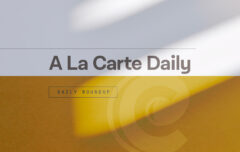We live in a world of many wonders. There are the wonders of God’s creation that are almost too great for us to comprehend: the towering mountains, the boundless seas, the countless stars in the skies above. Then there are the wonders of human ingenuity: the machines, the inventions, the works of art. One lifetime is not nearly enough to explore or appreciate even the smallest fraction of them all. But of all the wonders of this world, I sometimes think the absolute masterpiece must be the human face.
A face is no more than a few inches in circumference, yet across billions of human beings, no two have ever been the same. The face is the smallest of canvases, yet a canvas on which God displays infinite variety and endless creativity. Every part of the face can be different from one person to another: the shape of the eyes, the size of the mouth, the hue of the skin, the arch of the eyebrows, and on and on. Though we speak of “identical twins,” no two are actually identical once we know what to look for—the differences they display upon their faces. Our faces define us and distinguish us. They always represent us and sometimes betray us.
The face is not only a canvas that displays but also a billboard that communicates. Its 43 muscles can combine to create an infinite number of expressions. We express our joy in smiles, our concern in frowns, our anger in scowls, our rage in sneers, and our humor in grins. From a trickle of sweat on a forehead, to the redness or paleness of a cheek, to the brightness or dullness of the eyes, our faces communicate our illness and health. From the dilating of a pupil to the twitch of an eyelid, our faces communicate whether we are lying or telling the truth. A wife can flirt with her husband through the tiniest change of expression observable only to them and a dad can rebuke his child with no more than the slightest squint of an eye. In worship our faces are rapturous, in grief they are downcast, in disgust they are horrified, in boredom they are impassive. In so many ways, our faces display outwardly all that we believe and feel inwardly.
The face is also the seat of our senses. Every part of the body can feel, but only the face can feel, see, taste, smell, and hear. Each of those senses is experienced by the face and each of those senses is displayed upon it. Our faces convey whether a smell is pleasurable or revolting, whether a taste is wonderful or disgusting, whether a sensation is enjoyable or repugnant, whether a sound is too quiet or obnoxiously loud. Our faces so naturally display what we think and feel that we must train ourselves to restrain them, lest we give offense to others. We cannot control whether our faces are homely or beautiful, but we can control our countenance, the aspect of the inner self that is displayed upon the outer.
In so many ways, our faces display outwardly all that we believe and feel inwardly.
So crucial is the face to our ability to both give and receive communication, that we hamper ourselves when we rely too much on mediated forms of it. We know what it means to speak words while rolling our eyes or to hear words while displaying rage, both of which are missed when we type, text, or call. Our faces often communicate what our words do not or what our words cannot. The fullness of human communication depends upon not only hearing but seeing.
It is little wonder then that one of the great promises of the gospel is that we will someday meet Jesus face-to-face. The joy of this promise would not be nearly so great if it was simply meeting him hand-to-hand or back-to-back. There is a form of connection and relational intimacy that can only be realized when our faces are directed toward one another, when our eyes lock, when we see and are seen. And we long for this day, for as much as we love and appreciate the word of our Lord, we long to see his face, for then we will see him as he is. We long to have the mediate give way to the immediate, to have distance give away to proximity. We long to look into those eyes, hear that voice, see those expressions upon his face, and know him as he is. We long and pray for the day when we will finally see the greatest of all wonders—the human face of our uncreated God, the eager face of the Savior who has been awaiting us, the smiling face of the Christ who has saved us.










